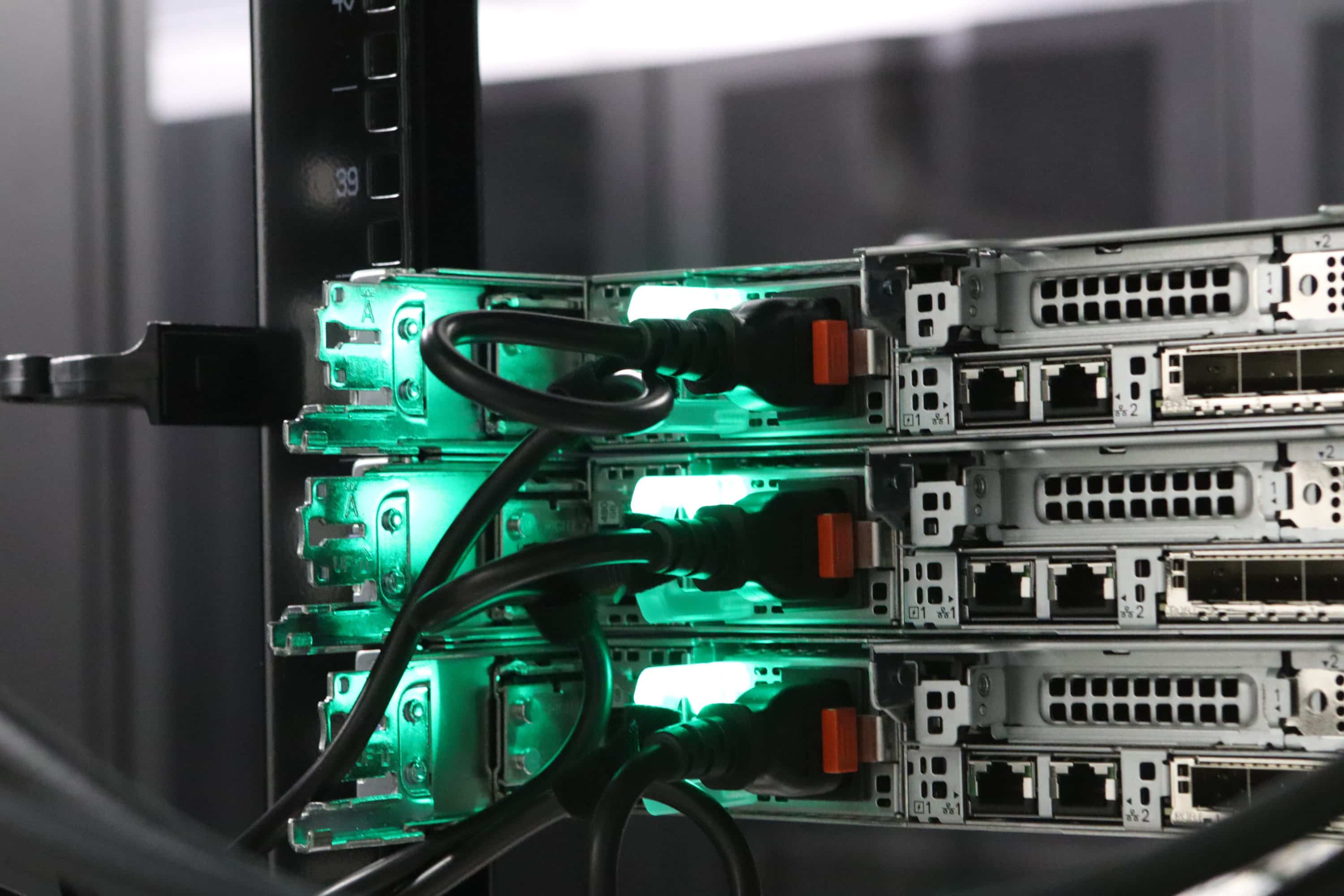16.05.2024
Five benefits of a direct liquid cooled data center
Blog

Air cooling has long been a conventional method for dissipating heat in data centers, but it is reaching its limits as rack power densities reach unprecedented levels. Recognizing this challenge, Verne Finland is excited to integrate direct liquid cooling technology into Pori data center’s existing air-cooled sustainable data center. The escalating demand for processing power in modern data centers results in higher heat generation, surpassing the capacity of traditional air cooling systems.
For businesses looking to enhance their data center efficiency, improve energy savings, and future-proof their AI and high-performance computing (HPC) workloads, direct liquid cooling (DLC) presents a game-changing opportunity.
The Growing Need for Liquid Cooling in Data Centers
The demand to process immense, complex workloads is increasing at a rapid pace, requiring high-performance computing (HPC) and extremely efficient data processing. With the AI data center market expected to reach nearly $50 billion by 2027, operators must adopt innovative cooling strategies to keep up.
To meet growing customer demand, data centers are requiring more power. This growing demand for power comes with more data center heat, leading to the urgent need for more effective cooling strategies, such as direct liquid cooling. Research suggests that pairing DLC with air cooling can significantly improve power usage effectiveness (PUE), reduce operational costs, and lower energy consumption. Liquid cooling not only preserves energy, but it also transforms data centers into beacons of sustainability.
How Does Direct Liquid Cooling Work?
Direct liquid cooling uses liquid-based cooling plates to manage IT equipment temperatures. Cold plates on top of the heat-generating components capture the heat with the water, which is then removed to a heat exchanger. This direct transfer of heat is extremely efficient, leading many data centers to integrate DLC as a supplement - or even a full replacement - for traditional air cooling systems.
The Direct-Impact Benefits of A Direct Liquid Cooling Data Center
By directly cooling components with liquid, DLC reduces the need for energy-intensive air conditioning, leading to significant cost and efficiency gains. Here are five key benefits:
- Energy efficiency: Reduces power consumption and optimizes cooling for high-density workloads.
- Improved performance: Maintains optimal CPU & GPU temperatures for maximum efficiency.
- Cost savings: Lowers operational expenses and extends hardware lifespan.
- Environmental sustainability: Supports heat reuse and minimizes water consumption.
- Scalability and future-proofing: Enables efficient data center expansion and AI readiness.
Let’s take a closer look at these advantages.
1. Energy Efficiency
Air alone is no longer a sufficient data center cooling method for some applications that come with new computing demands. Direct liquid cooling boasts unparalleled heat dissipation capabilities. With AI workloads growing exponentially, DLC is becoming essential for managing higher rack power densities.
The limitations of air's thermal conductivity can hinder the ability to efficiently absorb and dissipate the intensifying heat loads. Liquid cooling is a more efficient solution for data centers due to its ability to draw heat away from high-power-density racks. DLC enables precise temperature control, reducing excessive airflow requirements and increasing overall cooling efficiency.
2. Improved Performance
New-generation CPUs and GPUs have much higher thermal power densities than before, and servers can have multiple of these inside. With high thermal power densities, air cooling does not work sufficiently—direct liquid cooling is needed to maintain optimal operating temperatures and maximize performance.
With inadequate cooling, CPU and GPU performance rates deteriorate due to overheating—an issue common in air-cooled systems. By implementing DLC, Verne Global is counterbalancing rising compute demands while enhancing efficiency with Dell Technologies’ DLC3000 rack solution, capable of cooling up to 80kW+ per rack.
3. Cost Savings
Liquid cooling offers a heat transfer capacity far superior to traditional air cooling methods, making it an ideal solution for high-performance, process-intensive applications at both the core and the edge. Beyond reducing energy costs, DLC also minimizes long-term operational expenses by extending hardware lifespan and reducing maintenance requirements.
4. Environmental Sustainability
Not only does liquid cooling reduce data center energy consumption and improve PUE, but it also supports the integration of heat reuse initiatives. DLC enables captured heat to be repurposed for district heating systems, reducing reliance on traditional energy sources.
Additionally, liquid cooling systems generally use less water than traditional evaporative cooling methods, further improving sustainability. Verne Global’s Nordic data centers in Iceland and Finland leverage renewable energy sources in combination with DLC to create one of the most sustainable AI compute solutions available.
5. Scalability and Future-Proofing
Scalability is key. Liquid cooling not only meets current demands but also future-proofs data centers. By increasing rack density, DLC enables efficient use of data center space, supporting the most demanding AI workloads.
Tap Into the Benefits of a Direct Liquid Cooling Data Center
DLC ensures that growing data center demands and technological advancements are met with ease. As AI workloads continue to expand, data centers must evolve to stay ahead of rising power densities and efficiency requirements. Direct liquid cooling is no longer an option—it’s a necessity for future-proofing infrastructure.
Verne’s Nordic data center campuses are purpose-built to support and scale the most demanding AI and HPC applications, delivering world-class performance with unmatched sustainability. Whether you're in the early stages of exploring liquid cooling or ready to transition at scale, we can help you unlock its full potential.
Get in touch today to learn how Verne can optimize your AI workloads with cutting-edge, energy-efficient cooling solutions. The future of AI compute starts here.

